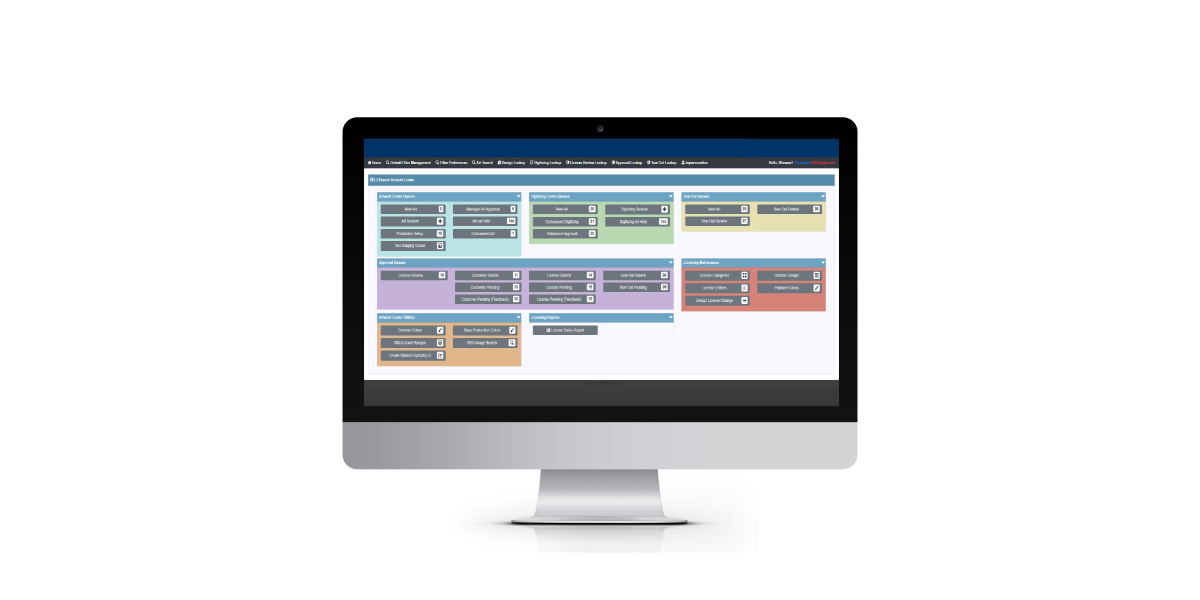Explore how Rishabh Software helped a North American apparel company revolutionize its outdated legacy ERP system with a strategic approach to overcome scalability and usability challenges.
Project Overview
A North American apparel company, specializing in vintage-inspired custom apparel, faced growth constraints due to a legacy ERP system. The outdated system hindered ordering, design, production, shipping, accounting, and reporting. We undertook a phased modernization to overcome scalability and usability issues, revitalizing their operations. This transformation ushered an era of streamlined processes and data-driven decision-making with the apparel ERP system modernization.
Challenges
Limited Functionality: The legacy ERP system was slow and struggled to handle the growing volume of orders, resulting in delays in order processing and shipment. It lacked the capability to sync with the evolving business requirements. The outdated ERP was also unable to leverage advanced data analytics to tap into the power of collective insights for real-time visibility and actionable insights.
Data Integration: The client desired seamless data flow between different departments and stakeholders for better visibility across the board. However, the legacy ERP system was unable to seamlessly integrate with standalone data components and modules, leading to manual data entry, errors, and discrepancies. Data and reports were stored in silos on an old data storage that was not accessible in real-time which often in either overstocking or inventory stockouts.
Security Vulnerabilities: The existing ERP system could be easily exploited as it had an outdated security architecture which made it vulnerable to evolving security threats.
Limited Mobility: Lack of real-time data access on mobile devices affected the sales team’s decision-making abilities.
Scalability Issues: The legacy ERP made it challenging to enter new markets because of its inability to scale up to meet the company’s expansion plans.
Outdated Reporting: Due to the outdated reporting capabilities of the system, it failed to deliver the comprehensive insights required for strategic decision-making.
Solution

Our team undertook a phased approach to address customer’s challenges. The engagement commenced with a Requirements Assessment (RA) phase to build confidence and identify areas of improvement. We helped recognize the need for change while embarking on a journey to ERP modernization. Here’s how they tackled the challenge:
Needs Assessment: The initial step involved a comprehensive needs assessment, including consultant collaboration and internal surveys, aiding in goal definition for the modernization of the ERP solution for the apparel industry.
Platform & Roadmap consulting: Drawing from our vast expertise, we advised the client to employ Microsoft Stack for enhanced scalability and integration. Leveraging Microsoft technologies, we added mobile access features and modernized the ERP with .NET Core and Angular.
Modernization & Customization with Technology Scaling: While the updated ERP system offered many out-of-the-box features, it still needed specific customizations to align the system with their unique processes. We consulted the client to choose Microsoft Azure as the go-to solution. Its suite of services ensured minimal disruption to ongoing operations while offering flexibility and scalability in accommodating the company’s evolving needs and aligning the ERP system with its requirements.
Solutions Provided
Legacy Application Modernization
- Modules: Order & Customer
- Technologies Used: .NET Core, Angular, SQL
- Outcome: Successful migration of customer’s legacy system from VB Access to modern .NET Core and Angular. The modules were successfully delivered and are now fully operational management for regular stock replenishment.
Legacy System Maintenance
- Modules: SKU Approval
- Technologies Used: VBA, .NET Core, MVC, SQL
- Outcome: Maintenance and enhancement of legacy system along with deployment of SKU Approval module. The integration efforts were segmented into various projects. The migration of Order and Customer modules was successfully executed, followed by the Sales Rep Module implementation. The partnership facilitated the live launch of the Customer and Licensing Portal (SKU Approval).
BI & Data Migration
- Modules: SKU Approval
- Technologies Used: Power BI, Azure
- Outcome: The analytics work with Power BI involved integrating data from diverse sources, establishing robust data models, and helping develop custom dashboards for each department (including sales analysis, production analysis, workforce capacity, and performance measurement along with senior executive level reporting). Key metrics were defined, and data migration was facilitated to empower different departments with data-driven decision-making capabilities.
Key Features Of The Solution
The robust SaaS-based solution helps address the critical concerns of apparel companies by providing information with integration across marketplaces over a single platform. Here are two key features:
Modernized ERP System
In addition to the out-of-the-box features, the modern ERP system can be optimized to meet customer’s specific customizations to align the system with their unique processes.
Custom & Function-Driven Dashboards
We helped in developing 20+ dashboards that covered the operations of varied sub-departments, including supplier, inventory and production management, creatives & artwork, invoicing, and packaging with vendor integration that enabled users across each value-stream component with actionable business intelligence.
Benefits
- 75% reduction in time helped boost resource performance.
- 30% cost savings through predictive analytics for issue detection and maintenance
- 43% cost reduction resulted in improved efficiency & fostered collaboration.
Customer Profile
A North American apparel company, specializing in vintage-inspired custom apparel.



 30 Min
30 Min


